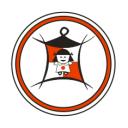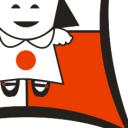KEKALAHAN JEPANG dan SEJARAH PEMBENTUKAAN BPUPKI & PPKI
§ § Tahun 1944 Pulau Saipan jatuh ke tangan Amerika Serikat.
§ 9 September 1944 Perdana Menteri Koiso memberikan janji kemerdekaan kepada Indonesia dengan mengibarkan bendera Merah Putih disamping bendera jepang disetiap kantor.
§ 1 Maret 1945 Jenderal Kumakichi Harada membentuk Dokuritsu Junbi Cosakai atau Badan Penyelidik Usaha Persiapan Kemerdekaan Indonesia (BPUPKI) dengan Radjiman Widyodiningrat sebagai ketua dan R. Suroso sebagai Wakilnya.
§ 29 Mei 1945 BPUPKI diresmikan oleh Panglima Tentara Wilayah Ketujuh Jenderal Izagaki (Jawa Barat) dan Panglima Tentara Wilayah Keenambelas Jenderal Yuichiro Nagano di Gedung Cuo Sangi In dijalan Pejambon. Tujuan : merumuskan undang-undang dasar.
§ Dilaksanakan sidang BPUPKI dari tanggal 29 Mei – 1 Juni 1945 yang menghasilkan PANCASILA (Piagam Jakarta). Isi sidang :
1. 29 Mei 1945 à Mr. Muh. Yamin dengan rancangan dasar negara Indonesia Merdeka :
A. Peri kebangsaan
B. Peri kemanusiaan
C. Peri ketuhanan
D. Kesejahteraan rakyat
2. 31 Mei 1945 à Prof. Dr. Supomo dengan lima rancangan dasar negara Indonesia Merdeka :
a. Persatuan
b. Kekeluargaan
c. Mufakat dan Demokrasi
d. Keadilan Sosial
3. 1 Juni 1945 à Ir. Soekarno dengan rancangan dasar yang bernama PANCASILA :
1. Kebangsaan Indonesia
2. Peri Kemanusiaan
3. Mufakat atau Demokrasi
4. Kesejahteraan Sosial
5. Ketuhanan Yang Maha Esa
§ 22 Juni 1945 dibentuk Panitia Sembilan yang menghasilkan Jakarta Charter atau Piagam Jakarta yang kemudian diganti menjadi Undang-Undang Dasar 1945( 11 Juli 1945).
Panitia nya : a. Ir. Soekarno
b. Drs. Moh Hatta
c. Mr. Muh Yamin
d. Mr. Ahmad Subardjo
e. Mr. A.A. Maramis
f. Abdulkahar Muzakar
g. Wachid Hasyim
h. H. Agus Salim
i. Abikusno Tjokrosujoso
§ 14 Juli 1945 sidang kedua BPUPKI dipimpin oleh Dr. Supomo untuk menerima laporan Panitia Perancang UUD 1945:
A. Pernyataan Indonesia Merdeka
B. Pembukaan Undang – Undang Dasar
C. Batang Tubuh UUD
§ 6 Agustus 1945 Sekutu menjatuhkan Bom Atom dengan nama “little boy” di Kota Hiroshima, Jepang
§ 7 Agustus 1945 dibentuknya pengganti BPUPKI yaitu PPKI (Panitia Persiapan Kemerdekaan Indonesia) yang dalam bahasa Jepang disebut Dokuritsu Junbi Inkai oleh Jenderal Besar Terauci.
- Ketua : Ir. Soekarno
- Wakil : Mohammad Hatta
- Penasehat : Ahmad Subardjo
Penunjukan dilakukan dilakukan di Saigon/Dalat (Vietnam Selatan) yang diwakili oleh Ir. Soekarno, Drs. Moh Hatta dan Radjiman Widyodiningrat. Jumlah anggota 21 lalu bertambah menjadi 27 anggota saat para pemimpinnya mengambil alih.
§ 9 Agustus 1945 Sekutu menjatuhkan bom atom yang kedua kalinya di Kota Nagasaki, Jepang.
§ 10 Agustus 1945 Sutan Syahril mendengar Jepang menyerah kepada sekutu melalui radionya dan mulai bersiap-siap memproklamasikan Kemerdekaan RI
§ 14 Agustus 1945 para wakil PPKI yang diutus ke Dalat, Vietnam tiba di Indonesia . Sutan Syahril mendesak Ir. Soekarno untuk segera memproklamasikan Kemerdekaan RI namun ditolak
§ 15 Agustus 1945 Jepang menyerah kepada sekutu dan berjanji mengembalikan Indonesia ke tangan Belanda
§ 16 Agustus 1945 (pagi hari) Ir. Soekarno dan Drs. Moh Hatta dibawa ke oleh golongan muda ( Sutan Syahril, Wikana, Darwis, dan Chaerul Saleh) ke Rengasdengklok yang kemudian dikenal dengan peristiwa Rengasdengklok. Hal itu dilakukan agar beliau tidak terkena pengaruh dari Jepang.
§ 16 Agustus 1945 (malam hari) Soekarno dan Hatta bertemu dengan Jenderal Moichiro Yamamoto dan bermalam dirumah Laksamana Maeda ( Jl. Imam Bonjol No. 1) yang kemudian dikenal dengan perumusan naskah Proklamasi Kemerdekaan Indonesia.
a. Naskah disusun oleh Ir. Soekarno, Drs. Moh Hatta, dan Mr. Ahmad Soebardjo
b. Teks Proklamasi ditulis tangan oleh Ir. Soekarno
c. Yang hadir dalam perumusan itu adalah B.M. Diah Sayuti Melik, Sukarni dan Soediro
d. Naskah Proklamasi ditanda tangani oleh Ir. Soekarno dan Drs. Muh Hatta atas usul dari Sukarni
e. Teks Proklamasi diketik oleh Sayuti Melik
§ 17 Agustus 1945 jam 10.30 pembacaan naskah teks proklamasi kemerdekaan oleh Ir. Soekarno. Awalnya proklamasi dilaksanakan di Lapangan Ikeda namun akhirnya pindah ke rumah Ir. Soekarno dirumahnya(Jl. Pegangsaan Timur no 56) dan kemudian pengibaran bendera Merah Putih yang dijahit Ibu Fatmawati oleh Latief Hendraningrat dan Soehoed. Diantaranya yang hadir saat itu adalah:
1. Soewirjo
2. Wilopo
4. Tabrani
5. Trimurti
§ 18 Agustus 1945 dilaksanakan sidang pertama PPKI dengan hasil :
a. Menetapkan UUD Negara RI
b. Memilih Presiden (Ir. Soekarno) dan Wakil Presiden(Drs. Muh Hatta)
c. Menetapkan tugas Presiden dibantu oleh Komite Nasional Pusat (KNIP)
§ 19 Agustus 1945 dilaksanakan sidang PPKI yang ke dua dengan hasil :
1. Negara Indonesia dibagi menjadi 8 Provinsi, yaitu Sumatera, Kalimantan, Jawa Barat, Jawa Tengah, Jawa Timur, Sulawesi, Maluku, dan Sunda Kecil. Setiap provinsi dibagi dalam beberapa Karesidenan yang dikepalai oleh seorang Residen dan dibantu oleh Komite Nasional Daerah.
2. Pemerintah Indonesia dibagi dalam 12 Parlemen (kementrian), yaitu :
a. Dalam Negeri
b. Luar Negeri
c. Keuangan
d. Kehakiman
e. Keamanan Rakyat
f. Kesehatan
g. Pengajaran
h. Penerangan
i. Sosial
j. Pekerjaan Umum
k. Perhubungan RI
§ 22 Agustus 1945 sidang PPKI ke tiga dilaksanakan yang menghasilkan :
a. Menetapkan Komite Nasional Pusat
b. Menetapkan Partai Nasional Indonesia
c. Menetapkan Badan Keamanan dan Badan Penolong Keluarga Korban Perang.
§ 22 Agustus 1945 Jepang mengumumkan menyerah di depan umum di Jakarta dengan melucuti senjata dab membubarkan PETA dan HEIHO.
§ 23 Agustus 1945 dibentuk BKR (Badan Keamanan Rakyat) pertama kali dari bekas anggota HEIHO dan PETA.




